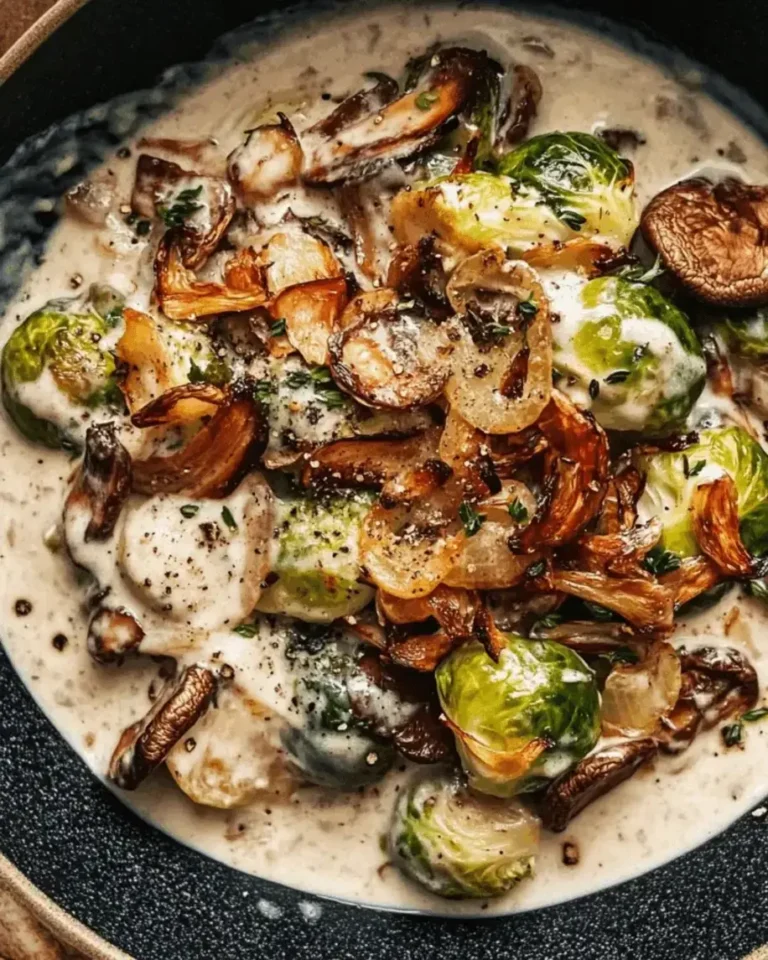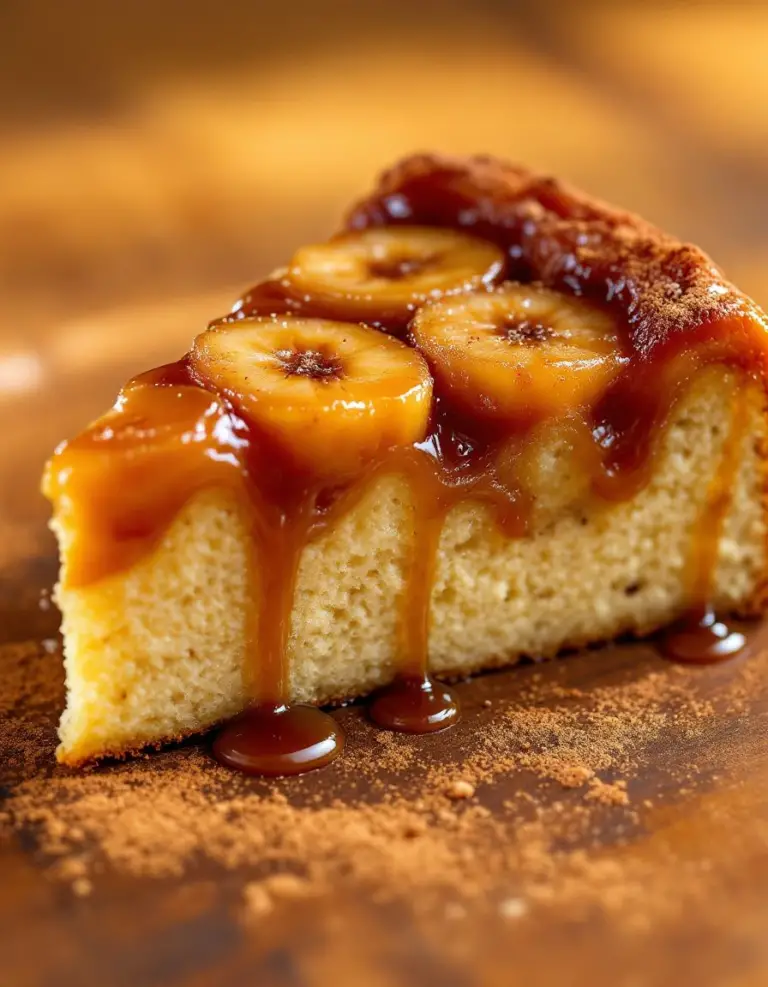Delicious Lemon Blueberry Scones: A Perfect Morning Treat

Lemon Blueberry Scones: A Bright and Flavorful Delight
Discover the delightful combination of zesty lemon and juicy blueberries with these homemade Lemon Blueberry Scones. Bursting with flavor, these scones make the perfect treat for breakfast or an afternoon snack. The light, flaky texture, paired with the sweet and tart notes of lemon and blueberries, will leave your taste buds dancing. Each bite melts in your mouth, offering a refreshing twist that will brighten any day. Not only are they easy to make, but they also create a warm, inviting aroma in your kitchen that’s hard to resist.
These Lemon Blueberry Scones are incredibly versatile. Whether enjoyed on their own or accompanied by a dollop of clotted cream, they’re bound to impress. They are especially delightful when served warm, and the golden-brown crust gives way to a soft and tender interior. This recipe is simple enough for novice bakers yet impressive enough to serve at any gathering, ensuring you’re ready for guests or simply treating yourself to something special.
Quick Recipe Highlights
- Flavor Profile: The bright citrus flavor of lemon enhances the natural sweetness of blueberries, creating a perfect balance.
- Texture: These scones have a wonderfully flaky exterior with a moist and soft crumb, making each bite a delight.
- Aroma: The lovely fragrance of fresh lemon zest fills the kitchen, complemented by the sweet scent of baked blueberries.
- Visual Appeal: Golden-brown outsides with bursting blue and yellow hues make these scones a feast for the eyes.
- Skill Level Needed: Suitable for all skill levels; great for beginners looking to perfect simple baking techniques.
- Special Equipment: Requires a baking sheet, mixing bowls, and a whisk; no fancy tools needed!
Recipe Overview
- Difficulty Level: These Lemon Blueberry Scones are categorized as easy, making them perfect for beginners and casual bakers alike. The straightforward steps allow for quick learning and practical application of baking principles.
- Category: Ideal as a breakfast dish or an afternoon snack, these scones are versatile enough for any time of day.
- Cuisine: Drawing inspiration from traditional British scones, this recipe incorporates fresh ingredients that add a modern twist to a classic favorite.
- Cost: The ingredients are relatively inexpensive, making this recipe a budget-friendly choice for any home cook.
- Season: Lemon Blueberry Scones shine in the spring and summer when both lemons and blueberries are at their peak freshness, but they can be enjoyed year-round.
- Occasion: Perfect for brunches, tea parties, or as a quick snack when entertaining friends and family.
Why You’ll Love This Recipe
The taste and texture of these Lemon Blueberry Scones are simply irresistible. The bright lemon flavor cuts through the sweetness of the blueberries, creating a tart yet sweet experience. Each scone is light and fluffy, providing a delightful contrast to the juicy berries that burst with flavor with every bite. The textural combination of the crunchy exterior and tender interior makes them a perfect companion with tea or coffee.
Convenience is another standout feature of this recipe. In just 35 minutes, you can have warm, freshly baked scones ready to enjoy. The straightforward preparation allows for quick and easy assembly, making it suitable even for a busy weekday morning. Plus, these scones can be made ahead, providing a make-ahead option for those who enjoy planning meals in advance.
Nutritionally, these scones provide a mix of carbohydrates and fiber with the addition of fresh fruit. Blueberries are known for their health benefits, rich in antioxidants and vitamins. Lemon adds not just flavor but also a dose of Vitamin C, contributing to a well-rounded treat that doesn’t just satisfy sweet cravings but supports your wellness journey.
When it comes to social gatherings, these Lemon Blueberry Scones are a hit. Their appealing look and burst of flavor make them a wonderful shareable treat. They can serve as a delightful addition to brunch spreads or sweet accompaniments at afternoon tea, always sparking conversation and compliments from guests.
Cost-effectiveness plays a significant role as well. The ingredients used in this recipe are not only affordable but also commonly found in many kitchens. With minimal investment, you can create gourmet-quality scones that rival those found in bakeries, providing a rewarding experience both in taste and in savings.
Historical Background and Cultural Significance
Scones originally hail from the United Kingdom and have a long-standing tradition in British culture. They are typically served during afternoon tea, pairing wonderfully with clotted cream and jam. The addition of fruits like lemon and blueberries marks an evolution that carries the classic ingredient base into more modern and flavorful territories, showing versatility in how this timeless treat can be enjoyed.
The cultural importance of scones extends beyond just British tradition; they serve as a reminder of hospitality, often marking gatherings and special moments among friends and family. The ritual of preparing and enjoying scones together fosters connections and creates cherished memories, deeply ingrained in social practices related to food.
Over time, the recipe for scones has evolved, adapting to regional tastes and available ingredients. Variations can be found across the world, from savory cheese scones to sweet versions filled with chocolate or dried fruits. The incorporation of lemon and blueberries into the dough showcases how personal tastes have influenced classic recipes, making them even more enjoyable.
Regional variations of scones continue to inspire bakers everywhere. For example, in the United States, the biscuit-style scone is popular, often resulting in a denser, buttery treat. In contrast, the traditional British scone tends to be lighter and sweeter, showcasing the global appeal and adaptability of this delightful baked good.
Ingredient Deep Dive
Lemons
Lemons are not merely a flavor enhancer; they hold a rich cultural significance throughout culinary traditions worldwide. In baking, lemon zest and juice are commonly employed to bring brightness and acidity to sweet dishes, balancing sweetness effectively. Nutritionally, lemons are high in Vitamin C, aiding in immune support and providing natural detoxification benefits.
When selecting lemons, look for firm and smooth-skinned fruit, as these often yield maximum juice. Store them in the fridge to prolong freshness, and feel free to substitute with bottled lemon juice if necessary, keeping in mind that fresh lemons yield unparalleled flavor.
Blueberries
Blueberries are often celebrated for their numerous health benefits, including high antioxidant levels and potential heart health support. They are deeply rooted in American culture, historically used by Native Americans both as a food source and in medicinal practices. Their sweet flavor and juicy texture make them an ideal complement to baked goods, enhancing both taste and nutrition.
When choosing blueberries, opt for plump, firm berries with a deep blue color. Store them in a breathable container in the refrigerator and rinse only before use to maintain their quality. Frozen blueberries can also be used as a substitute, providing a year-round option for this delicious ingredient.
Common Mistakes to Avoid
- Using cold butter can hinder the creation of flaky scones. Always start with room temperature butter to ensure the right texture.
- Overmixing the dough leads to tough scones; mix just until combined for the best results.
- Allowing the scones to sit too long before baking can cause them to lose their lift. Aim to bake them right after shaping.
- Incorrect oven temperatures can also affect scone texture, so always preheat the oven properly.
- Not using parchment paper can make for a difficult cleanup, so lining your baking sheet is essential.
- Substituting key ingredients without consideration may affect the final outcome; always think through replacements.
- Skipping the egg wash can cause the scones to be less golden; always brush the tops for color.
- Using stale ingredients negatively impacts flavor; always ensure your baking powder and baking soda are fresh.
- Not allowing scones to cool slightly can affect taste; give them a chance to rest before serving.
- Forgetting to zest the lemon properly can diminish flavor; ensure you use fresh zest for brightness.
Essential Techniques
Mastering the art of cutting in butter is crucial for achieving the right scone texture. This technique involves using a pastry cutter or your fingers to incorporate the butter into dry ingredients, creating small, pea-sized pieces. This step is essential for flaky layers in your finished product. The key is to work quickly and avoid melting the butter, which can lead to dense scones.
Understanding how to not overmix the dough is vital in baking. Overmixing can result in tough scones, so it’s best to gently fold the ingredients until just combined. The aim is to maintain the integrity of the dough while ensuring all ingredients are incorporated. Look for a shaggy dough that holds together but isn’t overly smooth.
Pro Tips for Perfect Lemon Blueberry Scones
1. Always use cold ingredients for the best texture. Keep your butter, cream, and eggs cold to maintain the desired consistency.
2. If possible, let your dough rest in the fridge for 30 minutes before baking. This chilling process helps enhance flavors and firm up the dough.
3. Add a sprinkle of coarse sugar on top before baking for a crunchy texture and extra sweetness on the crust.
4. Experiment with different citrus fruits. Orange or lime can be substituted for lemon for varying flavors.
5. Consider adding herbs such as thyme for a unique flavor twist that complements the blueberries beautifully.
6. Make sure to use fresh berries for the best flavor; frozen ones can make the dough soggy if not properly drained.
7. Invest in a pastry blender for cutting in butter; this tool makes the process much easier and more effective.
8. Use a round cutter to ensure even-sized scones, which contribute to uniform baking.
Variations and Adaptations
Regional variations of scones can include different berry combinations, such as raspberries or blackberries, providing a unique taste profile. Seasonal adaptations might feature pumpkin spice or cranberry in the fall, offering a festive twist for the holidays.
Dietary modifications could involve making the scones gluten-free using almond or coconut flour. For a dairy-free version, consider substituting milk with nut milk and butter with coconut oil while still achieving delicious results.
Flavor variations can extend beyond fruits; consider adding chocolate chips or mixed nuts for a more indulgent treat, ensuring there’s something for every palate.
Texture modifications can be introduced by adding oats for a hearty crunch, making them more substantial while being flavorful. For presentation, drizzle with a simple lemon glaze or serve alongside whipped cream to elevate the experience.
Serving and Presentation Guide
For beautiful plating, arrange the scones in a circle on a serving platter, garnishing with lemon wedges and fresh mint for visual appeal. Drizzle with a lemon icing for an elegant touch, making them not only delicious but also attractive for any gathering.
Garnishing ideas could include a light dusting of powdered sugar or a sprinkle of lemon zest over the top. Serve with traditional accompaniments like clotted cream and homemade jams for a charming afternoon tea experience.
Modern serving suggestions might include pairing the scones with a refreshing fruit salad or yogurt for a balanced breakfast option. Temperature considerations are essential; these scones are best enjoyed warm from the oven, with a light crust and soft interior.
Portion control tips include cutting the scones into uniform pieces for ease of serving, ensuring everyone enjoys an equal treat during gatherings.
Wine and Beverage Pairing
For a delightful pairing, consider serving these scones with a glass of sparkling wine, which complements the citrus notes beautifully. Alternatively, a light white wine, such as a Sauvignon Blanc, offers fresh and fruity overtones that enhance the flavors of lemon and blueberry.
Non-alcoholic alternatives can include iced tea infused with lemon or a refreshing lemonade, providing a crisp accompaniment to the sweet and tart scones.
For coffee lovers, a medium roast coffee works wonderfully, balancing the sweetness with its rich bitterness. When serving, ensure beverages are at their ideal temperatures to maintain the best flavor experience.
Storage and Shelf Life
For storing scones, keep them in an airtight container at room temperature for up to three days. This method preserves their texture and flavor, ensuring they remain delicious.
If you need to store them longer, consider refrigeration, which can extend their freshness for up to a week. Freezing is also a great option; simply wrap them tightly in plastic wrap and then aluminum foil to prevent freezer burn, allowing them to keep for up to three months.
Signs of spoilage include an off smell or a dry, hard texture. If reheating, do so in the oven to revive their flaky texture and warmth, or microwave for a few seconds if you prefer a quicker option.
Make Ahead Strategies
To make these scones ahead of time, consider preparing the dough and shaping the scones, then freezing them before baking. This way, you can bake them fresh whenever you’re ready, making them a convenient option for busy mornings.
Store the unbaked scones on a baking sheet lined with parchment paper, and once frozen, transfer them to a zip-top bag. This method keeps them fresh and ready to bake at a moment’s notice.
The quality will remain intact because baking from frozen doesn’t compromise their texture; simply increase the baking time by a few minutes. Always remember to brush with an egg wash before baking to achieve a beautifully golden crust. Fresh elements, like enjoying them with whipped cream or fruit spreads, can be added just before serving for the best flavor experience.
Scaling Instructions
To halve the recipe, simply divide all ingredients by two, ensuring you adjust baking times accordingly. Monitoring the baking process closely ensures your scones don’t overbake.
For doubling or tripling the recipe, it’s best to work in batches to maintain proper mixing and baking conditions. Consider using multiple baking sheets or rotating trays to ensure even baking.
Equipment adjustments may include utilizing larger bowls or mixers for increasing the amount of dough, while still adhering to the original recipe’s ratios.
Cooking times may also require slight adjustments; always rely on visual cues, such as a golden crust and a toothpick test, for doneness, regardless of any scaling you choose to do.
Storage considerations should be factored in as well; ensure there’s ample space in your fridge or freezer for the expanded batch of scones.
Nutritional Deep Dive
Understanding the macro breakdown of these Lemon Blueberry Scones reveals a balance of carbohydrates, fats, and proteins, making them a suitable option for a quick energy boost. Each scone falls into a moderate caloric range, allowing for indulgence without overdoing it.
Micronutrient analysis highlights the benefits of blueberries, which are high in vitamins C and K, promoting skin health and immune function. Lemons contribute vital Vitamin C, enhancing overall nutrient intake.
When considering health benefits, these scones incorporate whole fruit, providing fiber and antioxidants. It’s a great way to enjoy a sweet treat while keeping health in mind, promoting better digestion and nutrition.
For dietary considerations, always be mindful of portion sizes. Each scone should be enjoyed as part of a balanced meal, factoring in options for sweets like these in overall daily intake.
Weight management tips suggest enjoying these scones as an occasional treat rather than a daily staple, promoting mindful eating without deprivation.
Dietary Adaptations
For those following a gluten-free diet, almond or coconut flour works beautifully in this recipe, allowing you to enjoy scones without gluten.
Dairy-free versions can easily be created using nut milk substitutes and coconut oil in place of butter, maintaining both flavor and texture.
Vegans can substitute eggs with flaxseed meal mixed with water, achieving the same binding properties without any animal products.
Lower-carb and keto-friendly adaptations can involve almond flour and a sugar substitute, ensuring you stay within dietary limits while enjoying flavor.
For those following paleo diets, substitute traditional flour with walnut or coconut flour, ensuring all ingredients remain within paleo guidelines.
For a low-FODMAP option, keep servings small and opt for lactose-free yogurt if toppings are desired.
Always consult dietary recommendations for any specific needs, allowing flexibility in these adaptations without sacrificing taste.
Troubleshooting Guide
If your scones come out dense, there may have been overmixing during preparation. Remember to fold ingredients gently for the ideal texture.
Should the flavor be off, consider adjusting lemon zest measurements or checking the freshness of blueberries, as these can dramatically change taste.
Temperature problems during baking can lead to uneven cooking; always preheat your oven thoroughly and use an oven thermometer for accuracy.
Ingredient challenges might arise; substitutions can affect outcomes, so research the best alternatives for each component to maintain the recipe’s integrity.
For timing concerns, ensure your oven is at the right temperature—if they seem to be baking too fast or slow, adjusting racks or timing is key to achieving perfection.
Recipe Success Stories
Many bakers in the community have shared their success with this recipe, often highlighting personal twists they’ve implemented. Some readers have successfully swapped in other fruits, such as raspberries or strawberries, showcasing the versatility of the scones while maintaining adaptiveness in flavor.
Feedback about texture has been overwhelmingly positive, with many noting the light, fluffy quality of the baked scones. Stories of enjoying them at tea parties or picnics further amplify their appeal for entertaining.
Photography tips shared by readers emphasize the importance of presentation; beautiful arrangements not only enhance enjoyment but also elevate the kitchen experience.
Overall, the consistent praise for the flavor profile and texture encourages both experienced bakers and novices to try their hand at these delightful scones!
Frequently Asked Questions
Can I make these scones ahead of time?
Yes, you can prepare the dough up to 24 hours in advance. Simply shape and chill the scones in the fridge until you’re ready to bake them. This keeps them fresh and often enhances their flavor.
How can I store leftover scones?
Store leftover scones in an airtight container at room temperature for up to three days. If you want to keep them fresh longer, consider freezing them for up to three months.
Can I use frozen blueberries?
Absolutely! Frozen blueberries are a great option, just be sure to thaw and drain them before mixing with the dough to prevent excess moisture.
What can I substitute for buttermilk?
You can make your own buttermilk by adding 1 tablespoon of lemon juice or vinegar to a cup of milk. Let it sit for about 10 minutes until it thickens slightly.
How do I know when the scones are done baking?
Look for a golden-brown exterior and use a toothpick to test for doneness; it should come out clean when inserted into the center of a scone.
Can I add chocolate chips to the dough?
Yes! Adding chocolate chips will create a delicious twist to the scones, balancing the tart blueberries with sweet chocolate flavor.
Why are my scones too dry?
If your scones turn out dry, you may have over-measured the flour or overbaked them. Ensure you’re using the proper measuring techniques and keep a close eye on baking time.
What’s the best way to reheat scones?
The best way to reheat scones is to wrap them in foil and heat in a preheated oven at 350°F for about 10 minutes. This keeps them warm and flaky.
Can I make these scones gluten-free?
Yes! You can substitute all-purpose flour with gluten-free flour blends. Ensure the blend contains a leavening agent for the best results.
Is it necessary to use egg in the recipe?
The egg helps bind the ingredients together and enriches the scone’s texture. However, you can replace it with a flaxseed meal mixture for a vegan option.
Additional Resources
For those eager to explore more recipes, check out our collection of breakfast treats, which includes muffins and pancakes, all highlighting fresh ingredients and easy preparation. You can also dive deeper into technique guides that focus on mastering baking fundamentals, ensuring you become a confident baker.
For ingredient information, explore a section dedicated to seasonal produce, offering tips on selecting and utilizing fresh fruit in your cooking and baking endeavors.
If you’re in search of new baking tools, our equipment recommendations section outlines must-have essentials for every home baker, allowing you to equip your kitchen for success.
Finally, keep an eye out for seasonal variations, showcasing how to adapt recipes to accommodate festive themes or modifications based on available ingredients.
Join the Conversation
We encourage you to share your baking experiences on social media! Share photos of your Lemon Blueberry Scones and tag us to join a community of fellow baking enthusiasts.
If you’ve enjoyed this recipe, leave a review and connect with others for recipe variations and tips that can enhance the experience.
Engaging with our community not only enriches your culinary journey but also inspires others to embark on their baking adventures. Your insights and creativity contribute to a shared passion for delicious food!
The Recipe
Lemon Blueberry Scones
Serves: 8 scones
Prep Time: 15 mins
Cook Time: 20 mins
Total Time: 35 mins
Kitchen Equipment Needed
- Baking sheet
- Parchment paper
- Mixing bowls
- Pastry cutter or fork
- Whisk
- Measuring cups and spoons
- Cutting board and knife
- Cooling rack
Ingredients
- 2 cups all-purpose flour
- 1/3 cup granulated sugar
- 1 tablespoon baking powder
- 1/2 teaspoon salt
- 1/2 cup cold unsalted butter, cut into pieces
- 1/2 cup buttermilk
- 1 large egg
- Zest of 1 lemon
- 1 cup fresh blueberries
- Additional lemon zest for garnish
- Coarse sugar for topping (optional)
Directions
- Preheat your oven to 400°F (200°C) and line a baking sheet with parchment paper.
- In a large bowl, whisk together the flour, sugar, baking powder, and salt.
- Add the cold butter to the flour mixture and use a pastry cutter to incorporate until the mixture appears crumbly.
- In a separate bowl, whisk together the buttermilk, egg, and lemon zest.
- Pour the wet ingredients into the dry ingredients and gently mix with a spatula until just combined.
- Carefully fold in the blueberries without overmixing the dough.
- Turn the dough out onto a floured surface and gently shape it into a rectangle about 1-inch thick.
- Cut the dough into triangles or use a round cutter to create rounds. Place them on the prepared baking sheet.
- Brush the tops with additional buttermilk and sprinkle with coarse sugar if desired.
- Bake in the preheated oven for 20-25 minutes or until golden brown and a toothpick inserted comes out clean.
- Remove from the oven and allow to cool on a wire rack before serving.
Recipe Notes
- For best flavor, use fresh blueberries whenever possible.
- Feel free to add a glaze of lemon juice and powdered sugar for extra sweetness.
- Leftovers can be enjoyed the next day or frozen for later use.
- Vegan and gluten-free adaptations can be made as mentioned in the dietary modifications section.






